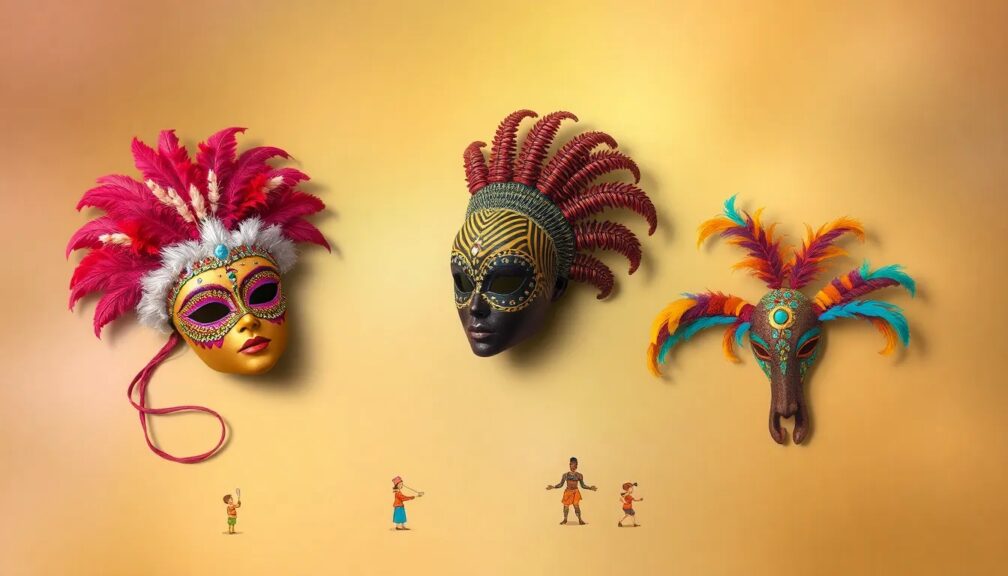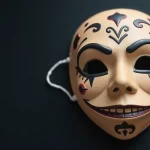10+ Interesting Facts About Masks You Didn’t Know

From ancient rituals to superhero blockbusters, masks have been part of human history for thousands of years. Did you know some cultures believe masks can connect the wearer to the spirit world, or that the first medical mask was invented in the 1890s? In this article, you’ll uncover interesting facts about masks—from their spiritual and cultural significance to their role in medicine, fashion, and pop culture. Get ready to explore the surprising stories behind one of the world’s most mysterious and meaningful objects.
1. Masks Have Been Used for Over 9,000 Years
The use of masks dates back more than 9,000 years, with archaeological evidence revealing their role in ancient rituals. Early civilizations in Africa and Asia crafted masks from natural materials like wood, bone, and clay to perform sacred ceremonies, hunt, or ward off evil spirits. These masks weren’t just decorative—they were powerful tools used to communicate with the spiritual world and enforce social roles in tribal communities.
2. The First Medical Mask Was Invented in the 1890s
Before germ theory was widely accepted, surgeries were performed without much regard for hygiene. That changed in the 1890s when French surgeon Paul Berger introduced a simple mask made from layers of gauze. Designed to prevent droplets from contaminating open wounds, this innovation laid the foundation for the modern surgical mask and transformed the way we approach health and hygiene in medical settings.
3. Some Tribes Believe Masks Hold Spiritual Power
In many African and Indigenous cultures, masks are more than artifacts—they are sacred objects believed to channel ancestral spirits or deities. Shamans or spiritual leaders wear them during rituals to heal the sick, bring rain, or protect against evil forces. These masks often feature symbolic designs that represent animals, elements, or divine beings, reinforcing their deep spiritual significance.
4. Venetian Carnival Masks Were Once Used to Hide Social Class
During the height of the Venetian Republic, wearing masks became a way to suspend the rigid boundaries of class. At Carnival, nobles and commoners alike would don elaborate masks—like the iconic Bauta or Colombina—allowing them to mingle freely, gamble, and speak openly without fear of judgment. In a deeply hierarchical society, masks offered a temporary taste of freedom and anonymity.
5. In Japan, Masks Represent Gods, Demons, and Emotions
Japanese Noh theatre has a long tradition of using masks to embody gods (kami), demons (oni), and human emotions. Crafted from carved wood and painted with exquisite detail, these masks are designed to subtly shift expression depending on the actor’s movement and lighting. A slight tilt can change a mask from joy to sorrow—highlighting the mastery behind this centuries-old performance art.
6. There Are Masks Made of Wood, Metal, Leather—even Feathers!
Throughout history, cultures around the world have used whatever materials were available to create masks. African masks are often made from carved wood and decorated with beads or paint. In the Amazon, tribes fashion masks from bark, leaves, and feathers. In Europe, leather and metal were commonly used for war masks or masquerade. The diversity of materials reflects the creativity and symbolism of each culture.
7. The Use of Face Masks Surged Globally During the COVID-19 Pandemic
In response to the global COVID-19 crisis, face masks became an essential tool in public health. At the height of the pandemic, over 129 billion masks were used every month worldwide. What was once largely confined to hospitals became part of everyday life, influencing fashion, communication, and even environmental discussions around waste and sustainability.
8. Masks in Pop Culture Are More Than Just Costumes
From superheroes to villains, masks have become iconic symbols in pop culture. Characters like Batman, Spider-Man, and Darth Vader use masks not only to hide their identities but also to project power, fear, or mystery. These masks often tell a story about the character’s past or inner struggle, making them crucial elements of storytelling and brand identity.
9. Some Masks Are Considered Sacred and Cannot Be Worn by Outsiders
In many indigenous communities, masks are sacred items restricted to specific members of the tribe, such as spiritual leaders or initiates. Wearing these masks without proper training or permission is not only disrespectful but can also be seen as a violation of spiritual protocols. Cultural appropriation of these sacred objects is a serious issue that continues to spark debate around respect and preservation.
10. Not All Masks Cover the Face — Some Only Cover the Eyes
While most people think of full-face masks, many traditional and modern designs focus only on the eyes. Venetian masquerade masks like the Domino offer a sense of anonymity with elegance. In modern use, sleep masks cover only the eyes to block out light and improve rest. These partial masks serve functional, theatrical, and aesthetic purposes across different contexts.
Fun and Weird Mask Facts
The World’s Most Expensive Mask Costs Over $1 Million
Crafted during the COVID-19 pandemic by a luxury jewelry brand, this face mask was made from 18-karat gold and encrusted with diamonds. While impractical for everyday use, it set a new standard for extravagant mask design.
Some People Collect Hundreds of Masks from Around the World
Mask collecting has become a serious hobby for many, with enthusiasts seeking traditional masks from Africa, Asia, and the Americas. Each mask tells a story and reflects the artistry and beliefs of its culture of origin.
There Are Competitions for Mask-Making in Many Cultures
From Japanese festivals to Latin American carnivals, mask-making contests are common. Artisans compete to craft the most beautiful, creative, or symbolic designs—often judged by cultural experts or the public during festivals.
 Types of Masks and Their Uses
Types of Masks and Their Uses